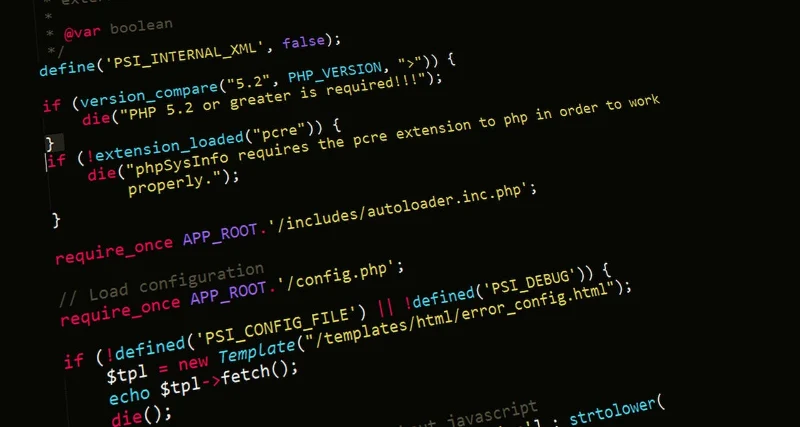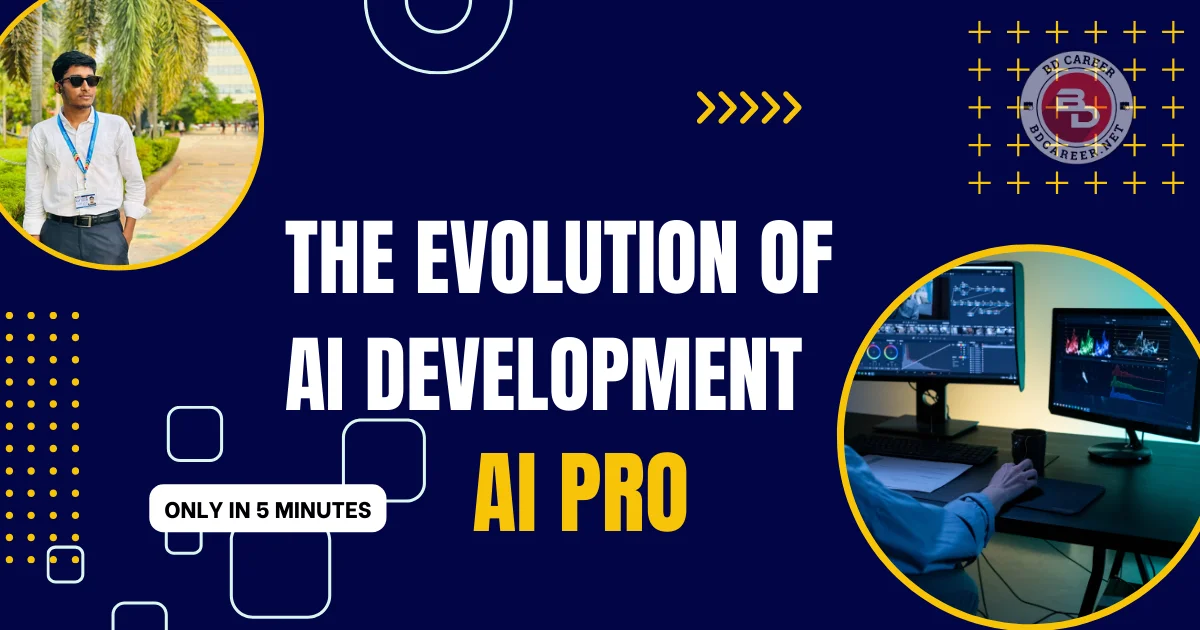Artificial Intelligence (AI) integration has ushered in a new era in the dynamic AI frontend development landscape, redefining how we design and interact with user interfaces. As technology advances, AI’s role in front-end development becomes increasingly prominent, enhancing the overall user experience and streamlining the design process.
Contents
- Defining AI’s Role in Frontend Development
- Importance of AI in Enhancing User Experience
- Exploration of AI-powered UI/UX Personalization
- Use Cases of AI-driven Design Tools for Frontend Developers
- Impact of AI on Optimizing Website Performance
- Fundamental AI Technologies in Frontend Development
- Advantages of AI in Frontend Development
- Current Landscape of AI
- Conclusion
Defining AI’s Role in Frontend Development
Traditionally, front-end development focused on creating visually appealing and functional interfaces. However, with the advent of AI, developers now have a powerful ally that goes beyond static design principles. AI in front-end development involves using algorithms and models to analyze user behavior, predict preferences, and dynamically adapt interfaces to create a personalized user experience.
Importance of AI in Enhancing User Experience
User experience (UX) is at the forefront of front-end development, and AI is pivotal in elevating it to new heights. AI-powered systems can analyze vast amounts of user data, providing insights into individual preferences and behavior. This information is then used to tailor UI elements, content, and interactions, creating a more engaging and personalized experience for each user.

Exploration of AI-powered UI/UX Personalization
Understanding AI-driven Personalization
AI-driven personalization involves leveraging machine learning algorithms to understand user preferences and behaviors. By analyzing data such as past interactions, preferences, and demographic information, AI systems can dynamically adjust the UI to suit individual users. This enhances user satisfaction and increases the likelihood of user retention and engagement.
Tailoring User Experiences with AI
One of the significant benefits of AI-driven personalization is the ability to customize content and layout based on user data. For instance, an e-commerce website can showcase personalized product recommendations based on a user’s purchases or browsing history. Dynamic adaptation to user interactions ensures that the interface evolves with the user, providing a seamless and enjoyable experience.
Use Cases of AI-driven Design Tools for Frontend Developers
AI-powered Design Assistance
AI is increasingly becoming a valuable assistant to front-end developers in design. Design tools enhanced by AI algorithms can analyze design patterns, suggest improvements, and even automate certain aspects of the design workflow. This saves time and improves the overall quality of the design by incorporating insights from AI-driven analysis.
Collaboration Between Developers and AI
Successful collaboration between developers and AI is evident in the evolution of design tools. Developers can work in tandem with AI systems, utilizing their capabilities to generate design variations, test layouts, and even predict user reactions to different visual elements—the synergy between human creativity and AI precision results in a more efficient and innovative design process.
Impact of AI on Optimizing Website Performance
AI-driven Performance Optimization
Website performance is a critical factor in user satisfaction. AI algorithms can analyze user behavior patterns to predict peak traffic times and optimize resource allocation. This ensures that websites load faster during high-traffic periods, providing a smoother experience for users. Additionally, AI can identify and rectify performance bottlenecks in real time, contributing to overall system efficiency.
Responsive Design with AI
The proliferation of devices with varying screen sizes poses a challenge for front-end developers. AI comes to the rescue by enabling responsive design that adapts to different devices seamlessly. Through machine learning, AI systems can learn from user interactions on various instruments and optimize the layout for each screen size. This ensures a consistent and responsive user experience across desktops, tablets, and smartphones.
Fundamental AI Technologies in Frontend Development
Machine Learning and Pattern Recognition
Machine learning algorithms excel in recognizing patterns within data. In front-end development, this capability is harnessed to analyze user interactions, allowing applications to adapt and evolve based on user behavior. Machine learning contributes to a more intelligent and responsive front end, from recommending content to predicting navigation paths.
Natural Language Processing (NLP) for Improved Interactions
NLP empowers frontend applications to understand and respond to human language. Chatbots and virtual assistants leverage NLP to interpret user queries, providing more natural and conversational interactions. This technology bridges the gap between users and applications, creating a seamless and intuitive user experience.
Computer Vision in UI Design
Computer vision, a subset of AI, has found its place in UI design. Algorithms can analyze visual elements, such as images and layouts, to optimize the overall design of a front-end application. This ensures the optical components align with user preferences and enhance aesthetic appeal.
Predictive Analytics for User Behavior
Predictive analytics models analyze historical user data to forecast future behavior. In frontend development, this technology enables applications to anticipate user needs and tailor content or features accordingly. By understanding patterns, Front-end developers can create a more personalized and adaptive user interface.

Advantages of AI in Frontend Development
Automation of Repetitive Tasks
One of the significant advantages of integrating AI into front-end development is the automation of repetitive tasks. AI algorithms can handle routine coding tasks, allowing developers to focus on more complex and creative design aspects. This accelerates development and minimizes the risk of human errors in mundane tasks.
Personalization and User-Centric Experiences
AI-driven personalization transforms front-end applications into tailored experiences for individual users. By analyzing user preferences and behavior, applications can dynamically adjust content, layout, and features. This personal touch fosters a stronger connection between users and applications, increasing user satisfaction and loyalty.
Enhanced Performance and Optimization
AI’s ability to analyze vast amounts of data in real-time contributes to optimizing frontend performance. From load time optimization to resource allocation, AI algorithms ensure that frontend applications run efficiently and provide a seamless experience. This leads to faster response times and improved overall performance.
I have previously published many other articles. If you want to see them, click here.
- Future of Software Development
- Artificial Intelligence and Its Importance in Business
- The Future of AI-Generated Art and Design
- Humans and AI are Together, MindMate!
- AI Opportunities for Reskill Success
- AI’s Impact on Creative Innovation
Current Landscape of AI
State of Frontend Development Today
Modern front-end development involves complex frameworks, libraries, and tools to create rich and responsive user interfaces. Developers are tasked with meeting the rising expectations of users who demand functionality and aesthetically pleasing and intuitive designs.
Role of AI in Enhancing User Experience
AI has become a driving force behind the enhancement of user experiences. Through machine learning algorithms, frontend applications can analyze user behavior, preferences, and patterns to deliver personalized content and suggestions. This level of customization leads to more engaging and satisfying interactions for users.
Examples of AI-driven Frontend Technologies
Several AI-driven technologies have become integral to front-end development. Chatbots powered by Natural Language Processing (NLP) provide real-time assistance, while computer vision algorithms aid in image recognition and UI design. Predictive analytics algorithms anticipate user needs, creating a smoother and more proactive user experience.

Recap of AI’s Transformative Role
Integrating AI into front-end development has transformed how we approach design and user experience. From personalized interfaces to collaborative design tools and performance optimization, AI has proven to be an asset for front-end developers.
Conclusion
AI’s role in front-end development is expected to evolve as technology advances. Anticipating ongoing trends, developers are encouraged to embrace and explore the potential of AI in their workflows. The symbiotic relationship between human creativity and AI precision promises exciting innovations in front-end development, ensuring a future where user experiences are visually stunning, deeply personalized, and responsive.
